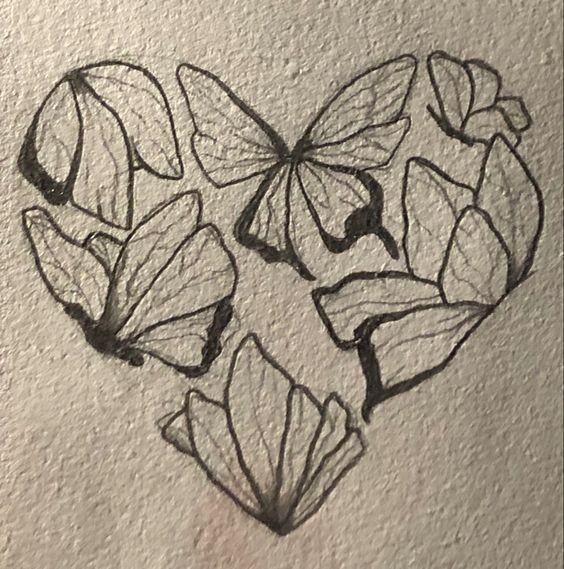Heart Drawing: Capturing Emotion Through Artistic Expression
Heart Drawing is a compelling and evocative art form that transcends simple representation. It’s a practice that not only depicts the anatomical structure of the heart but also explores its symbolic and emotional significance. This article delves into the various aspects of Heart Drawing, from its historical roots and techniques to its modern applications and symbolic meanings.
The Significance of the Heart in Art
The heart has long been a powerful symbol in art, representing a wide range of concepts:
Love and Affection: Perhaps the most common association, the heart is universally recognized as a symbol of love and romance. Its depiction in art often conveys deep emotional connections and intimate feelings.
Life and Vitality: As the organ that sustains life, the heart represents vitality, strength, and the essence of human existence. Its portrayal can evoke themes of health, energy, and endurance.
Emotional Expression: The heart is also a symbol of emotion and passion. In art, it can reflect a spectrum of feelings, from joy and happiness to sorrow and heartbreak.
Historical Context
Throughout art history, the heart has been a subject of fascination and significance:
Ancient Art: In ancient cultures, the heart was often depicted in symbolic forms. For instance, Egyptian art sometimes showed the heart as a symbol of the soul and personal identity.
Renaissance Art: During the Renaissance, artists like Leonardo da Vinci studied the anatomical structure of the heart, contributing to both scientific understanding and artistic representation.
Romantic Art: In the 19th century, Romantic artists used the heart as a powerful symbol in their work, reflecting themes of love, emotion, and personal experience.
Techniques in Heart Drawing
Creating a heart drawing involves various techniques that can range from realistic depictions to abstract interpretations:
Anatomical Accuracy: For realistic heart drawings, artists focus on the detailed structure of the human heart, including its chambers, valves, and arteries. This approach requires a good understanding of anatomy and precise drawing skills.
Symbolic Representations: Artistic representations of the heart often focus on symbolic or abstract elements. Artists may use stylized shapes, colors, and patterns to convey emotional or symbolic meanings.
Mixed Media: Combining traditional drawing techniques with mixed media can enhance the visual impact of heart drawings. Materials such as watercolor, ink, and digital tools can add texture, color, and depth.
Minimalist Approach: A minimalist approach to heart drawing emphasizes simplicity and elegance. Artists may use clean lines and subtle details to convey the essence of the heart without elaborate embellishments.
Modern Trends and Innovations
In contemporary art, heart drawings continue to evolve, incorporating new techniques and creative approaches:
Digital Art: The advent of digital tools has allowed artists to experiment with heart drawings in innovative ways. Digital illustrations can include vibrant colors, dynamic effects, and intricate details that are difficult to achieve with traditional media.
Abstract Interpretations: Modern artists often explore abstract representations of the heart, using shapes, colors, and patterns to express emotional or philosophical themes.
Interactive Art: Some contemporary heart drawings incorporate interactive elements, such as augmented reality or participatory installations, to engage viewers in new and immersive ways.
Applications and Benefits
Heart drawings have a wide range of applications and benefits:
Personal Expression: Creating heart drawings allows artists to explore and express their own emotions, experiences, and personal connections.
Decorative Art: Heart drawings are popular in home decor, especially in designs that celebrate love, romance, and emotional connections. They make beautiful prints, cards, and decorative elements.
Therapeutic Art: Drawing hearts can be a therapeutic practice, offering a way to process and express complex emotions. Art therapy often uses symbolic imagery like the heart to help individuals explore and communicate their feelings.
Conclusion
Heart Drawing is a rich and versatile art form that captures the emotional and symbolic significance of the heart. Whether through detailed anatomical studies or abstract representations, artists continue to explore and celebrate the heart’s profound impact on human experience. As a symbol of love, life, and emotion, the heart remains a powerful subject in art, inspiring creativity and connection in countless ways.






